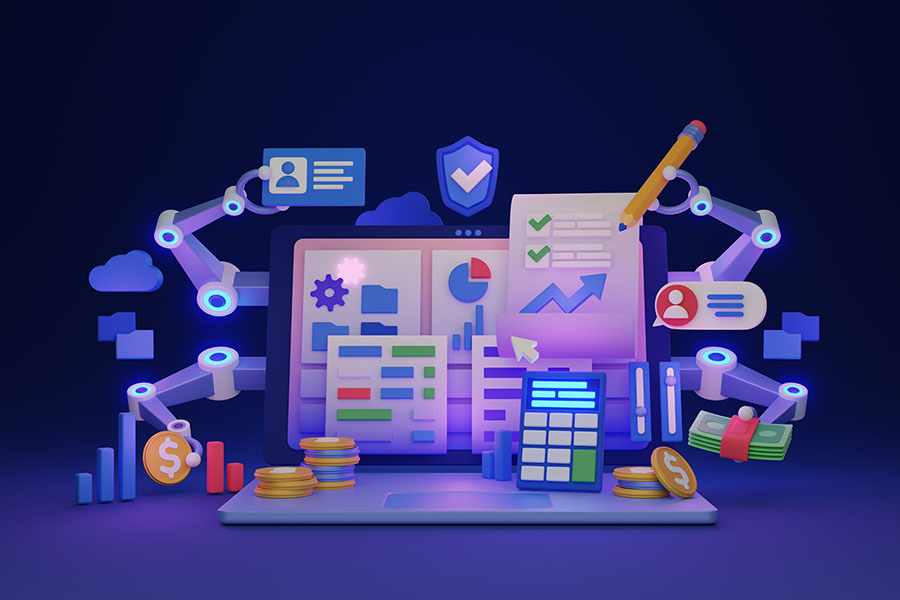A subsidiary ledger, also called a subledger, is a specialized accounting record that groups transactions from the general ledger (GL) by something of interest, like customer, vendor, or inventory. The total of all the subsidiary ledgers must equal the total of the GL account that they support. While the GL provides a high-level overview of a company’s financial health, the subsidiary ledger separates the transactions into more useful subsets.
What Is Included in a Subsidiary Ledger?
A subsidiary ledger contains detailed information about specific subsets of transactions or accounts within a company’s GL. Here’s a breakdown of what you might find in one:
Types of Subsidiary Ledgers
Here are some specific examples of information you might find in different types of subsidiary ledgers:
- Accounts receivable subsidiary ledger: This will contain an account for each customer along with the customer name and contact information. Transaction details will include invoice dates and amounts, payment dates and amounts, credits for returns or allowances, and an aging analysis of outstanding balances, or how long invoices have been unpaid.
- Accounts payable subsidiary ledger: This will have an account for each vendor that includes their name and contact information. Transactions in it will provide purchase order details, receipt dates and descriptions of goods or services received, payment dates and amounts, and any outstanding balances owed to suppliers.
- Inventory subsidiary ledger: The use of accounts within the inventory subledger will vary by company. Some might use a separate account for each class of inventory, while others will use an account for each specific inventory item number. Details in the inventory subledger include product or item identification codes, unit cost of each item, quantity received into inventory, details of internal transfers between departments or locations, sales of inventory items, and inventory write-offs due to damage or obsolescence.
- Fixed assets subsidiary ledger: As with inventory, the subsidiary ledger for fixed assets can vary greatly. Small companies with few fixed assets might not even need a subsidiary ledger. Regardless of how accounts are organized within the fixed asset subledger, it should include a description of each fixed asset (e.g., building and equipment), acquisition date and cost of the asset, depreciation method used and calculated depreciation expense for each period, and accumulated depreciation.
Our related resources:
Benefits of Subsidiary Ledgers
The main purpose of a subsidiary ledger is to break out the GL balance by customer, vendor, or similar item while also providing a deeper level of detail for specific types of transactions or accounts within a company’s GL. Here’s how they achieve this:
How to Optimize the Use of Subsidiary Ledgers
By implementing the following optimization strategies, you can maximize the benefits of subsidiary ledgers.
- Standardize data entry procedures: Ensure consistent data formats and coding structures across all transactions feeding into the subsidiary ledgers. This minimizes errors and simplifies data analysis.
- Leverage accounting software: Use accounting software with built-in subsidiary ledger functionalities to automate data entry, calculations, and reconciliations. This can save time and improve accuracy.
- Implement clear approval workflows: Establish well-defined procedures for approving transactions within each subsidiary ledger. This helps maintain control and reduces the risk of unauthorized activity.
- Perform regular data backups: Ensure regular backups of your subsidiary ledger to prevent data loss in case of system malfunctions or cyberattacks.
- Tailor reports to specific needs: Design reports from your subsidiary ledgers that cater to the specific information needs of different departments or stakeholders.
- Schedule regular data analysis: Perform regular reviews of subsidiary ledger data to identify trends, potential issues, and areas for improvement.
- Use data visualization tools: Consider using data visualization tools to present subsidiary ledger data in a clear and easy-to-understand format, facilitating better communication and decision-making.
- Review and update procedures: Regularly assess your subsidiary ledger processes and make adjustments as needed to adapt to changing business needs or regulatory requirements.
These can become powerful tools for enhancing your financial transparency, streamlining accounting tasks, and gaining valuable insights into your company’s financial performance.
Frequently Asked Questions (FAQs)
The GL provides a high-level overview of a company’s financial health and includes every account from the company’s chart of accounts. A subsidiary ledger offers a detailed breakdown of specific accounts within the GL.
Subsidiary ledgers are commonly used among accounting professionals for detailed recordkeeping and analysis. Managers rely on them for informed decision-making in specific financial areas. In addition, auditors use them during the auditing process.
A common example is an accounts receivable subsidiary ledger, which contains an account for every customer and tracks individual customer transactions, like invoice details, payments made, outstanding balances, and any discounts or returns. This provides much more information than Accounts Receivable in the GL, which isn’t grouped by customer.
No, they are not mandatory by law or GAAP. However, they are considered a good accounting practice and essential for businesses tracking invoices and bills from multiple customers and vendors.
Each subsidiary ledger has a corresponding control account in the GL. The total of all balances in the subsidiary ledger should match the balance in its GL control account.
Bottom Line
A subsidiary ledger is a separate record book that provides detailed information about specific types of transactions or accounts within a company’s GL. In short, subsidiary ledgers act as supporting documents that provide the “why” behind the “what” recorded in the GL. They offer a more transparent and detailed view of specific financial areas, empowering businesses to make informed decisions and maintain accurate financial records.


